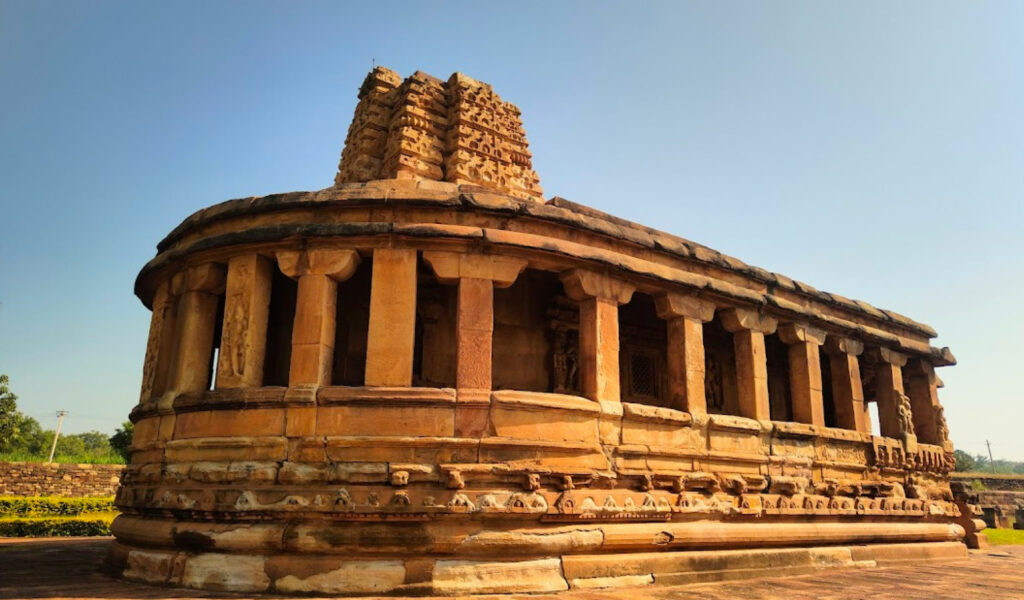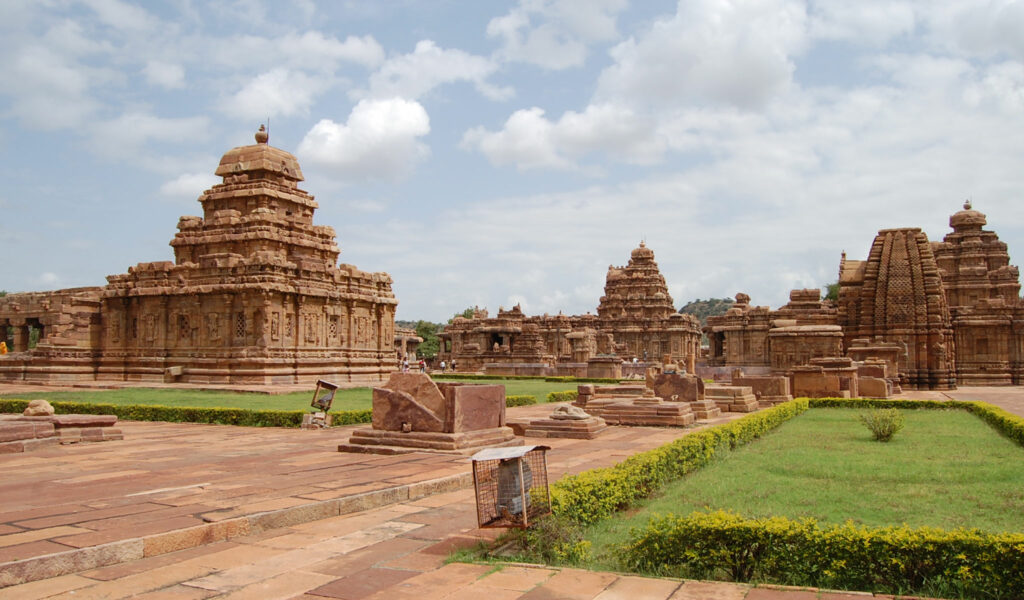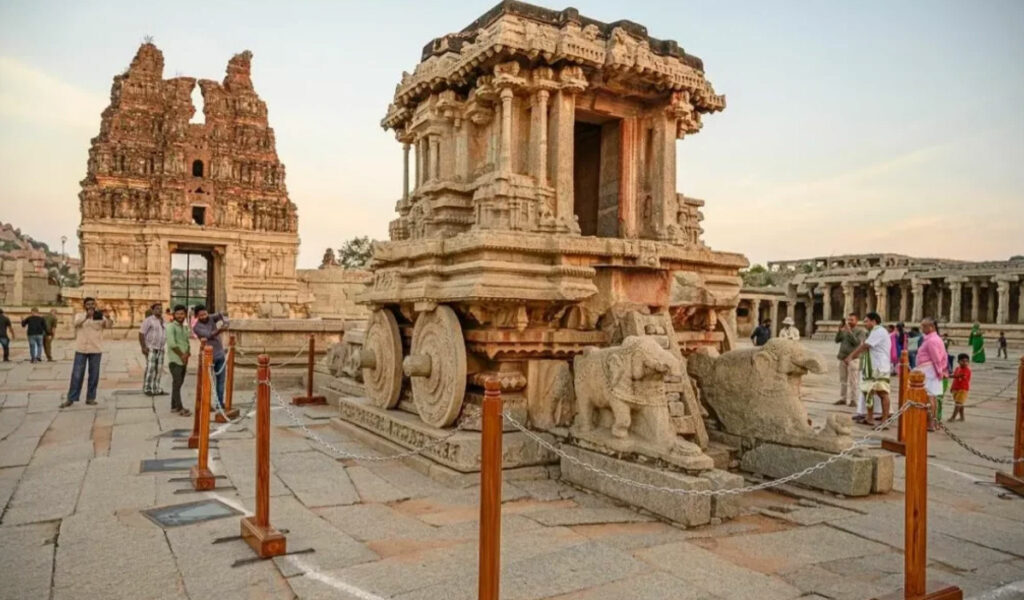Heritage Tourism in India: Where Every Stone Tells a Story
What is Heritage Tourism?
Heritage tourism is more than just ticking off famous monuments from a checklist—it’s about entering a dialogue with the past. It’s about standing in a centuries-old temple and imagining the hands that carved the stone, the minds that envisioned its geometry, and the culture that breathed life into its rituals.
When you engage in heritage tourism, you’re not just observing history from a distance—you’re walking its pathways, listening to its echoes, and reading its stories etched into architecture, sculpture, and landscape.
In the Indian context, this takes on an even deeper significance. With thousands of years of uninterrupted civilization, India offers heritage not as a relic, but as a living, breathing presence. Especially in South India, temples are not just places of worship—they’re repositories of sacred art, cosmic symbolism, dynastic pride, and architectural experimentation.
At Travelbaits Learning, we invite you to become more than a tourist—we invite you to become a seeker. A seeker who travels not just with a camera, but with curiosity. One who sees not just what the eye captures, but what the mind and heart can absorb.
Here, heritage tourism becomes a learning journey. Through guided storytelling, visual breakdowns, and on-site examples, we help you understand:
- Why a temple faces a particular direction
- What the carvings on its walls are trying to convey
- How styles evolved across dynasties—from the early Chalukyas to the Pallavas to the Vijayanagara rulers
- How mythology, astronomy, and philosophy come together in stone
Why Heritage Tourism Matters
In an age of fast-paced travel and superficial sightseeing, heritage tourism offers depth, meaning, and connection. It’s not just about where you go—it’s about how you experience the place and what you take away from it.
Discover Hidden Knowledge
Heritage sites are living books, waiting to be read. Every detail—from the direction a temple faces to the posture of a deity, from the shape of a gopuram to the smallest symbol on a pillar—has meaning. But most travelers miss it entirely.
Through heritage tourism and structured learning, you begin to uncover the coded wisdom of ancient civilizations:
- Why some temples face west instead of east
- What the different postures of Nandi signify
- How architecture reflects astronomical alignments
- The hidden philosophical ideas carved into stone
When you know what to look for, even a broken ruin becomes a storyteller.
Transform Your Travel Experience
When you understand a place deeply, your connection to it changes. A simple stepwell becomes a cosmic diagram. A temple corridor becomes a narrative of devotion.
Heritage tourism turns you from a visitor into an interpreter, from a spectator into a seeker.
It transforms the way you travel:
- You’ll begin to ask: Why is this temple shaped this way?
- You’ll connect mythology with architecture, and space with symbolism
- You’ll pause, reflect, and truly experience the soul of a site—not just its surface
This kind of travel stays with you long after the trip ends.
Support Responsible & Sustainable Travel
Engaging meaningfully with heritage sites isn’t just enriching for you—it’s crucial for them.
- Your awareness contributes to the preservation of ancient monuments
- Your interest helps sustain local guides, artisans, and custodians of tradition
- Your storytelling inspires others to travel more consciously and respectfully
Heritage tourism is an antidote to mass tourism. It’s slower, deeper, and infinitely more respectful of the places we visit and the cultures we engage with.
When you choose to understand before you post, to learn before you click—you become part of the preservation effort.
History Comes Alive: Learning at Heritage Sites
Explore these incredible destinations—each one included in our course and explained with clarity and storytelling.
1. Aihole: The Cradle of Temple Architecture

Tucked away in the rugged landscape of northern Karnataka, Aihole is not just a historical site—it’s a living textbook of Indian temple architecture.
Often described as a “classroom of architecture,” Aihole was the experimental ground for the early Chalukyas, who redefined how temples were designed, constructed, and experienced. With over 100 distinct temples built between the 6th and 8th centuries CE, it became the testing lab for ideas that would later mature in Pattadakal and Badami.
The Mystery of the Durga Temple
Among Aihole’s many architectural gems, the Durga Temple stands out—not for its deity, but for its shape.
Contrary to popular belief, the temple is not dedicated to Goddess Durga. The name “Durga” is derived from the word “Durg,” meaning fortress—the temple was located within a fort complex.
What truly makes it iconic is its semi-circular apsidal layout, resembling a Buddhist chaitya hall. This unusual form combines Buddhist influence with Hindu iconography—showcasing Aihole’s experimental spirit.
- It’s surrounded by a peristyle of sculpted pillars, each holding stories from the Ramayana and Mahabharata.
- Inside, you’ll find powerful depictions of Vishnu, Shiva, and Surya—reflecting the religious diversity of the time.
- Its elevated plinth and circular ambulatory (pradakshina path) show a keen understanding of spatial flow and ritual movement.
What You’ll Learn at Aihole with Travelbaits
At Travelbaits Learning, we don’t just show you the temples—we decode their language.
In our course, you’ll:
- Understand the evolutionary journey from Aihole to Pattadakal
- Learn how early design experiments led to future masterpieces
- Discover how the Chalukyas used symbolism and science in temple planning
- Appreciate how architecture served as both aesthetic expression and spiritual experience
By the time you finish exploring Aihole, you won’t just remember what you saw—you’ll understand why it mattered.
2. Badami: Rock-Cut Wonders Etched in Time

Perched between rugged red sandstone cliffs, Badami is a place where time seems to stand still—and stone speaks. Once the capital of the Early Chalukya dynasty, Badami is home to some of India’s finest rock-cut cave temples, carved directly into the heart of sandstone hills in the 6th and 7th centuries CE.
To the untrained eye, these may appear as ancient shrines—but look closer, and they unfold as cosmic blueprints, where iconography, mythology, philosophy, and science merge seamlessly.
The Cave Temples of Badami
There are four main cave temples at Badami, each offering a distinct spiritual and symbolic experience:
- Cave 1: Dedicated to Shiva, this cave features a dynamic image of Nataraja with 18 arms, capturing different dance poses—symbolizing cosmic cycles of creation and destruction.
- Cave 2 & 3: Dedicated to Vishnu, these caves depict him in his various forms—Trivikrama, Varaha, and Narasimha—not just as mythological tales, but as spiritual metaphors for protection, cosmic order, and dharma.
- Cave 4: A Jain cave temple showcasing Tirthankaras in deep meditative postures, emphasizing renunciation and inner stillness.
What’s fascinating is that these caves coexist harmoniously, reflecting a pluralistic vision of spirituality where Shaivism, Vaishnavism, and Jainism are not in conflict—but in conversation.
Look Deeper: Layers of Meaning
Badami isn’t just about gods and goddesses—it’s about cosmic alignment, yogic philosophy, and sacred geometry:
- The placement of caves follows a spiritual progression, moving from dynamic forms of deities to inner stillness.
- The layout mirrors yogic ascent—from external action (Nataraja’s dance) to inward meditation (Jain Tirthankaras).
- You’ll find symbols like the lotus, chakras, tridents, and celestial beings—each representing layers of the human and cosmic journey.
Even the light that falls into the caves at certain times of the day feels intentional—as though these temples were aligned not just with the earth, but with the universe.
What You’ll Learn at Badami with Travelbaits
In our Heritage Learning Course, we decode these caves in a way that blends visual storytelling with deep cultural insight.
You’ll explore:
- The artistic language of Badami’s rock-cut architecture
- How the Chalukyas fused spirituality and science
- The symbolism behind postures, ornaments, and carvings
- The architectural logic behind carving temples into cliffs rather than building them on land
By the end, Badami won’t just be a memory—it’ll be a map of meaning you carry into every heritage site you visit next.
3.Pattadakal: India’s Architectural Masterstroke

If Aihole was the classroom and Badami the canvas, then Pattadakal is the graduation ceremony—a site where the Chalukyas proudly presented their architectural mastery to the world.
Recognized as a UNESCO World Heritage Site, Pattadakal is not just a cluster of ancient temples—it’s a harmonious symphony of styles, philosophies, and dynasties, all meeting in one sacred landscape on the banks of the Malaprabha River.
A Fusion of Two Worlds: Nagara Meets Dravida
What makes Pattadakal truly unique is that it’s the only site in India where you’ll find North Indian (Nagara) and South Indian (Dravida) architectural styles coexisting side by side—not in competition, but in complete aesthetic dialogue.
- Nagara temples: Curvilinear shikharas (spires), often associated with regions north of the Vindhyas.
- Dravida temples: Pyramidal vimanas, stepped and sculpted, typical of the Tamil and Kannada regions.
- Pattadakal doesn’t choose one—it honors both, blending their features to create new hybrids that are structurally sound and symbolically rich.
This architectural cross-cultural conversation speaks volumes about the Chalukyas’ open-mindedness, experimentation, and spiritual ambition.
Temples as Testaments of Balance
Pattadakal’s layout is not random—it reflects balance, progression, and cosmic order. Every temple here tells a different story, both in stone and in silence:
- Virupaksha Temple: Commissioned by Queen Lokamahadevi to commemorate her husband’s victory, this is the crown jewel of Pattadakal. Inspired by the Kailasanatha Temple in Kanchipuram, it is rich in Ramayana, Mahabharata, and Shaiva iconography, with intricately carved pillars and ceiling panels.
- Mallikarjuna Temple: A smaller but equally stunning sibling of Virupaksha, also built by royal women—a testament to the active role of queens in temple patronage.
- Kadasiddeshwara, Galaganatha, Jambulinga: Showcasing Nagara elements with their tall curving shikharas, reminding us of the Chalukyas’ pan-Indian vision.
Each temple at Pattadakal isn’t just a structure—it’s a chapter in an evolving story of faith, form, and fusion.
What You’ll Learn at Pattadakal with Travelbaits
Through the Travelbaits Learning course, we guide you beyond the surface to decode:
- The stylistic elements of Nagara vs Dravida temples
- How and why the Chalukyas experimented with temple layouts
- The symbolism behind spatial organization, sculptures, and rituals
- How Pattadakal became a ceremonial center for royal coronations and temple consecration
You’ll come away not only knowing what to look for, but how to interpret it—the hallmarks of conscious heritage travel.
From Sightseeing to Insight
Pattadakal is not just a place to visit—it’s a place to reflect. It represents:
- The culmination of architectural thought
- The maturity of cultural vision
- The integration of diversity without dilution
When you stand among these temples, you’re not just standing in history—you’re standing in a moment where India’s spiritual and artistic unity was expressed in stone.
4. Hampi: Where History Echoes Through Ruins

Wander through the surreal boulder-strewn landscape of Hampi, and you’re not just walking through ruins—you’re stepping into the heartbeat of a once-mighty empire. Once the capital of the Vijayanagara Empire, Hampi is less a city and more a cosmic stage, where mythology, architecture, commerce, and spirituality unfolded in glorious harmony.
Declared a UNESCO World Heritage Site, Hampi is often called an open-air museum—but that doesn’t do justice to its soul. It’s a living memory of an empire that wasn’t just powerful, but profoundly philosophical and visionary in how it imagined sacred space.
Temples That Are More Than Stone
At the spiritual heart of Hampi lies the Virupaksha Temple, one of the oldest functioning temples in India. Here, devotion never stopped. From the 7th century to today, this temple remains active, reminding us that heritage is not frozen in time—it’s alive.
The Virupaksha complex is aligned with sacred geometry and river flow, symbolizing both earthly kingship and cosmic order. The main gopuram (gateway tower) draws your eyes upward—inviting not just entry, but elevation.
Just a short distance away, the iconic Vittala Temple stuns visitors with its musical pillars, exquisitely carved mandapas, and the world-famous Stone Chariot—a structure so detailed and finely balanced, it seems almost weightless.
But these temples weren’t just places of worship—they were spatial texts, where sculpture, structure, and symbolism were carefully composed to guide the devotee inward, from the outer world to the inner self.
More Than Temples: A Well-Planned Civilization
Hampi is more than a sacred complex—it was a meticulously planned urban center, with market streets, water pavilions, military watchtowers, and public gathering spaces.
- Hampi Bazaar once bustled with traders from Persia, Portugal, and beyond, selling diamonds, spices, and silk.
- The Royal Enclosure reveals insights into civic design, with aqueducts, stepwells, and audience halls that hint at political power balanced with aesthetic grace.
- Pushkarani tanks and sacred bathing pavilions show the importance of water—ritually, architecturally, and ecologically.
The city layout was no accident—it was aligned with cosmic principles, royal symbolism, and environmental harmony. This was not just a city—it was a sacred landscape.
What You’ll Learn at Hampi with Travelbaits
At Travelbaits Learning, we help you go beyond the ruins and into the vision that shaped them.
In our course, you’ll uncover:
- The philosophical ideas behind temple planning and orientation
- The ritual symbolism of mandapas, gateways, and sacred axes
- How the Vijayanagara builders achieved architectural precision and balance
- Why certain carvings depict mythological stories in a particular sequence
- How the urban planning of Hampi mirrors dharmic principles
With each step, you’ll stop seeing Hampi as a collection of ruins—and start seeing it as a resonant field of meaning.
Why Choose Travelbaits Learning?
At Travelbaits Learning, we don’t just name monuments—we decode them.
- 🎓 Learn the Basics of Temple Architecture
- 📖 Understand Symbolism & Sacred Geometry
- ✨ Explore Stories Hidden in Stone Carvings
- 📍 Know Why Temples Were Built Where They Were
We turn every visit into a guided journey of insight—using storytelling, visuals, and structured lessons.
Conclusion: Go Beyond Sightseeing
Heritage tourism isn’t just about seeing old buildings—it’s about understanding them.
The next time you step into a temple, imagine knowing what each carving means, why the temple faces a certain direction, and what story is unfolding on the walls. That’s what heritage learning offers.
Want to travel through time—consciously?
👉 Enroll now in our Temple Architecture & Heritage Travel course and start your journey into India’s ancient soul.
learning.travelbaits.in

